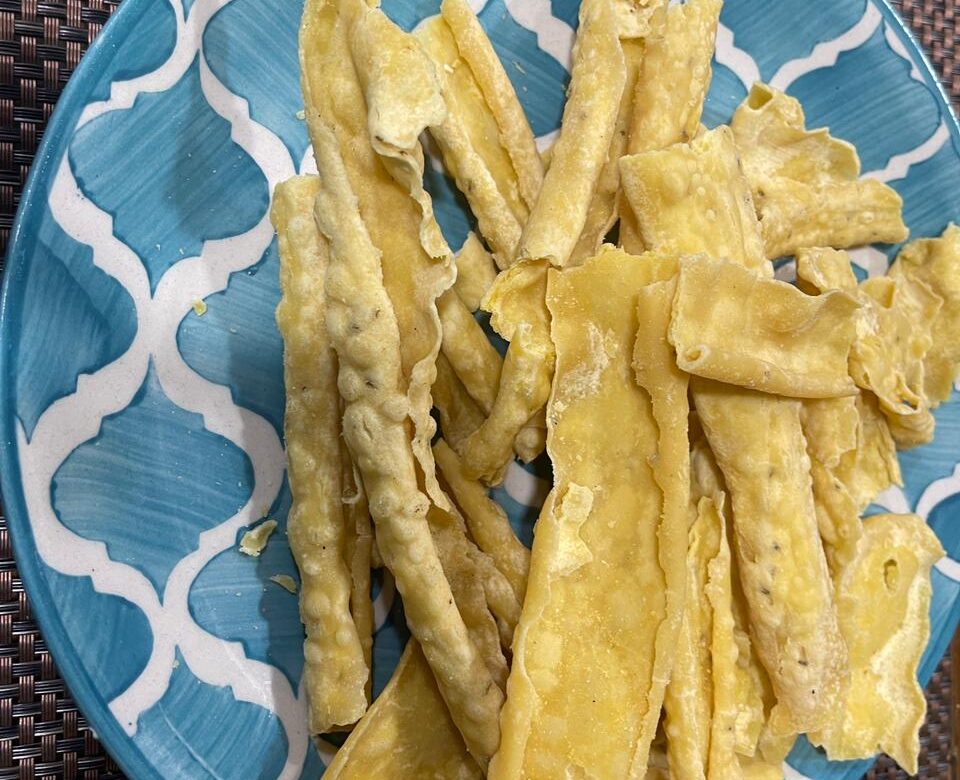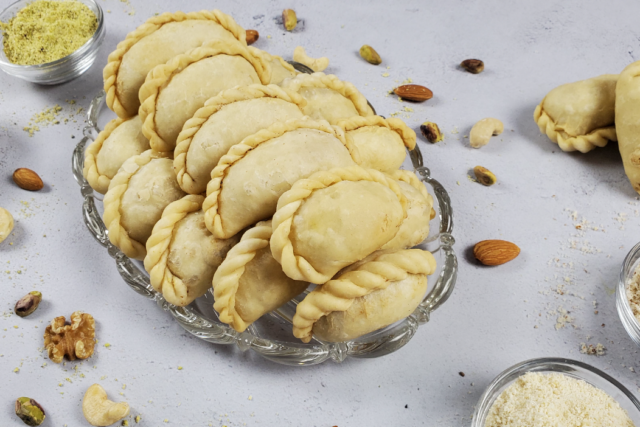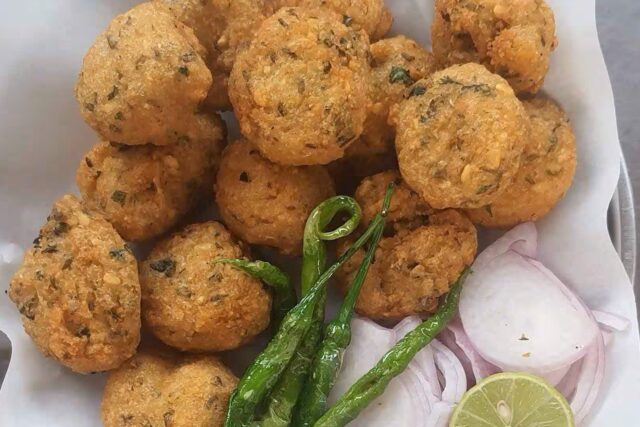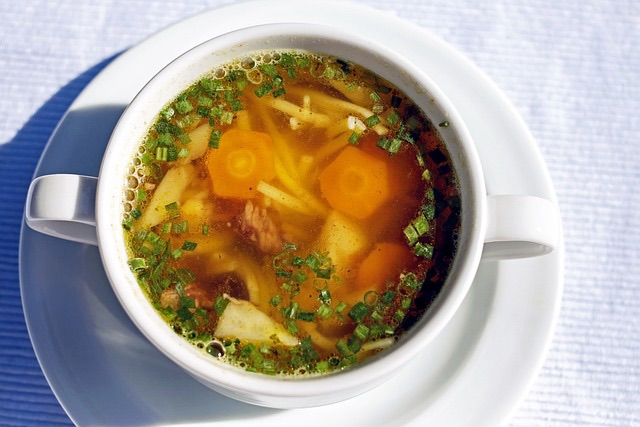Fafda: A Culinary Delight from Gujarat

Gujarat, a vibrant state in western India, is renowned for its rich cultural heritage and culinary diversity. Among the many delectable dishes that this state has to offer, Fafda holds a special place. This crispy, golden snack is not only a treat for the taste buds but also an integral part of Gujarat’s gastronomic tradition. Let’s delve into the fascinating world of Fafda, exploring its origins, significance, and how it is meticulously prepared. Finally, we’ll provide a detailed recipe so you can bring a taste of Gujarat to your own kitchen.
The Origins and Importance of Fafda
Fafda is a traditional Gujarati snack made from gram flour (besan). It is often paired with jalebi, a sweet counterpart, especially during festive occasions like Dussehra. The combination of Fafda and jalebi is not just a treat but a culinary tradition that signifies the balance of sweet and savory flavors in Gujarati cuisine.
The origins of Fafda can be traced back to the kitchens of Gujarati households where it was prepared as a quick and easy snack. Over time, its popularity soared, making it a staple in both street food stalls and high-end restaurants across Gujarat. The dish’s importance is underscored by its presence in cultural festivities, where it is not just a food item but a symbol of celebration and community bonding.
The Cultural Significance of Fafda
Fafda holds a unique place in the heart of Gujarat’s culinary culture. It is especially significant during the festival of Dussehra. On this auspicious day, it is customary for Gujaratis to enjoy a breakfast of Fafda and jalebi. This tradition is believed to bring good luck and prosperity. The crispy texture of Fafda combined with the sweetness of jalebi creates a perfect harmony of flavors, symbolizing the balance of life’s ups and downs.
In addition to its festive importance, Fafda is also a beloved everyday snack. It is commonly enjoyed with chutney or fried green chilies, making it a versatile dish that caters to various palates. The popularity of Fafda transcends regional boundaries, making it a favorite among food enthusiasts across India and beyond.
How Fafda is Made
The preparation of Fafda might seem simple, but it requires a certain finesse to achieve the perfect texture and taste. The main ingredient, gram flour, is kneaded into a dough with water and a blend of spices. This dough is then shaped into thin strips and deep-fried until golden and crispy. Let’s explore the step-by-step process of making Fafda.
Ingredients for Fafda
- 2 cups gram flour (besan)
- 1/4 teaspoon baking soda
- 1/4 teaspoon turmeric powder
- 1/4 teaspoon ajwain (carom seeds)
- 1/4 teaspoon black pepper powder
- 1/4 teaspoon asafoetida (hing)
- 2 tablespoons oil (for the dough)
- Salt to taste
- Water (as needed to make the dough)
- Oil for deep frying
Step-by-Step Recipe for Making Fafda
1. Preparing the Dough:
- In a large mixing bowl, combine gram flour, baking soda, turmeric powder, ajwain, black pepper powder, asafoetida, and salt.
- Add 2 tablespoons of oil to the dry mixture. This helps in binding the dough and making the Fafda crispy.
- Gradually add water and knead the mixture into a soft yet firm dough. It should not be too sticky or too dry.
2. Shaping the Fafda:
- Divide the dough into small, lemon-sized balls.
- On a clean, flat surface, take one ball of dough and roll it into a thin strip using your palms. The strip should be about 4-5 inches long and 1/2 inch wide.
- Repeat the process with the remaining dough balls.
3. Frying the Fafda:
- Heat oil in a deep frying pan over medium heat. The oil should be hot but not smoking.
- Gently slide the dough strips into the hot oil. Fry a few strips at a time to avoid overcrowding the pan.
- Fry the Fafda until they turn golden brown and crispy. This should take about 2-3 minutes per batch.
- Use a slotted spoon to remove the Fafda from the oil and place them on paper towels to drain excess oil.
4. Serving the Fafda:
- Fafda is best enjoyed fresh and hot. Serve it with a side of green chutney, fried green chilies, or the traditional accompaniment, jalebi.
Tips for Perfect Fafda
- Consistency of Dough: Ensure the dough is soft but firm. If it’s too sticky, add a little more gram flour. If it’s too dry, add a few drops of water.
- Oil Temperature: The oil should be hot enough to fry the Fafda quickly. If the oil is not hot enough, the Fafda will absorb more oil and become greasy.
- Rolling Technique: Roll the dough strips evenly to ensure they cook uniformly. Uneven thickness can result in some parts being undercooked or overcooked.
Nutritional Information
Fafda is a relatively healthy snack when consumed in moderation. Gram flour is a good source of protein and dietary fiber. However, since Fafda is deep-fried, it’s advisable to enjoy it as an occasional treat rather than a daily snack to maintain a balanced diet.
Enjoy delicious Fafda and Kadi when you visit Gujarat
Fafda is more than just a snack; it is a symbol of Gujarat’s rich culinary heritage. Its crispy texture and flavorful profile make it a favorite among food lovers. Whether enjoyed during festive celebrations or as an everyday treat, Fafda brings a piece of Gujarat’s vibrant culture to the table.
By following this detailed recipe, you can recreate the authentic taste of Gujarati Fafda in your own kitchen. So, roll up your sleeves, gather the ingredients, and embark on a culinary journey to savor this delightful snack. Whether you’re a seasoned cook or a novice in the kitchen, making Fafda is a rewarding experience that brings the flavors of Gujarat to your home.







